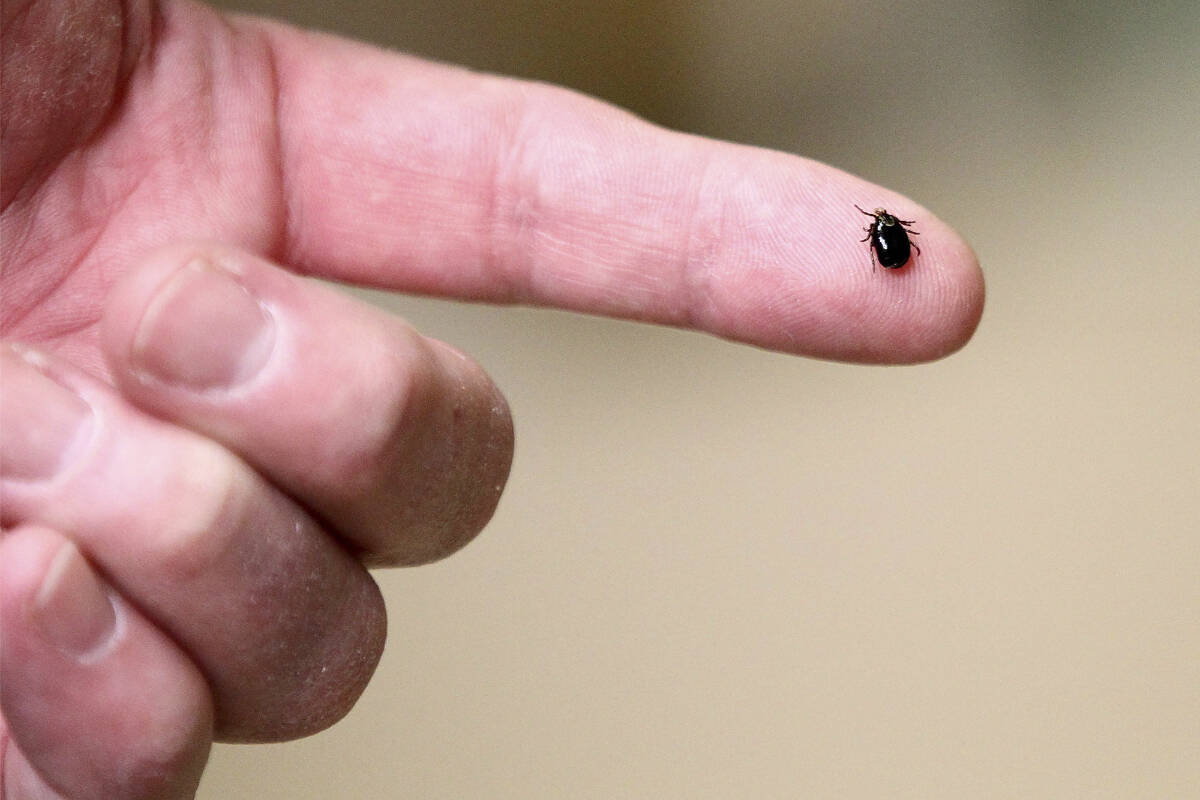It’s springtime in B.C. — that means cherry blossoms, people wearing winter jackets, shorts and flip flops all at once, and worst of all: ticks, those freaky little bugs that nobody wants to find on themselves or a pet.
One tick in particular, the western blacklegged tick, is being closely monitored by the B.C. Centre for Disease Control because of its potential to spread Lyme disease.
But the BCCDC needs your help finding and identifying those freaky little ticks.
They’ve teamed up with eTick, a free app developed by Dr. Jade Savage at Bishop’s University with funding from the Public Health Agency of Canada, that helps identify ticks so researchers and healthcare providers can better understand the risks of contracting Lyme disease in B.C.
To submit a photo, first, remove the tick from the host. Do not try to burn the tick off, don’t squeeze the tick, and don’t cover it with grease or any other substance as that only increases the risk of infection.
Just take some tweezers and grab hold of the tick as close to the skin as possible. Gently lift the tick straight off the skin without squeezing, twisting or jerking it. Once the tick has been removed, clean the bite area with soap and water, then apply an antiseptic to clean the wound. Then wash your hands.
After you’re all tick-free and cleaned up, place it in the freezer for 10 to 30 minutes — that’ll make it easier to take a photo of the tick or send it in for analysis if requested. Next, you’ll want to orient the tick on its belly with the head and back fully visible. Then turn it over on its back to get a photo of the underside of the tick.
Make sure the photo is taken in good, bright lighting to minimize shadows. Close-up photos are the best for researchers to analyze.
Fortunately, rates of Lyme disease in B.C. are among the lowest in Canada with only 1 in 100 ticks testing positive for the pathogen that causes Lyme disease. Erin Fraser, a public health veterinarian with the BCCDC, said while rates of infection remain low for now, climate change may change that.
“We really want to be monitoring ticks, where they’re more prevalent and where they’re distributed in B.C.”
Lyme disease is most likely to be present in areas along B.C.’s coast and on Vancouver Island. However, there is potential for Lyme disease in the Interior as well.
Fraser said something that works in B.C.’s favour is the western blacklegged ticks like to feed on lizards.
“When ticks feed on lizards there are some anti-bacterial properties that can help clear the infection in the tick, so when it feeds on a person, a pet, or another animal it won’t have the pathogen.”
If you’ve been bit by a tick and are concerned about developing Lyme disease, keep an eye out for the following symptoms: a skin rash at the site of the tick bite that feels warm but not itchy or painful, fever, headache, muscle and joint pains, fatigue, and weakness or paralysis of facial muscles.
People with symptoms of Lyme disease should contact a healthcare professional to be referred for laboratory testing. The BCCDC says the vast majority of people with Lyme disease can be successfully treated with two to four weeks of antibiotics, especially if the disease is caught early — though some people do suffer long-term symptoms from the infection.
The eTick app is available to download for Apple and Android devices and is available across Canada.
READ MORE: Summerland man battles Lyme disease for more than 12 years
READ MORE: Princeton pooch tests positive for Lyme disease
@SchislerCole
cole.schisler@bpdigital.ca
Like us on Facebook and follow us on Twitter.

